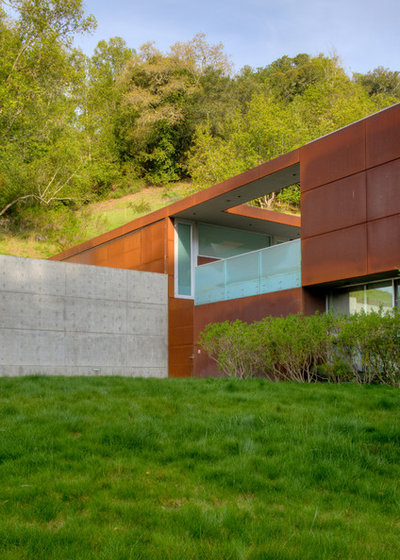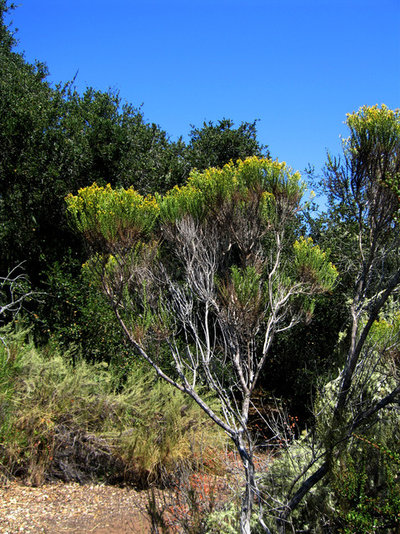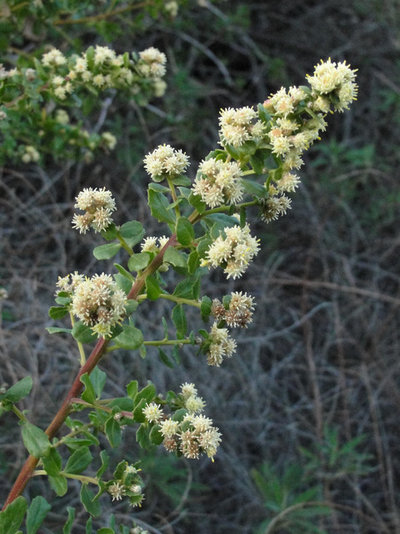You've seen coyote bush
(Baccharis pilularis) spreading along California beach bluffs and up through coastal canyons. While more often than not it's found rather than designed with, restorationists and advocates of native planting tout this easily overlooked shrub as one worth revisiting in the garden.
Native to the coastal bluffs and chaparral of California up to Oregon, coyote bush is a landscape survivor, reviving after fires or clearings. And while it's not the most showstopping garden plant, coyote bush attracts native fauna and reestablishes native flora.

Studio Green
Here coyote bush is planted with perennial grasses. Its dense structure and reliable evergreen foliage make an informal yet architectural screen.
Botanical name: Baccharis pilularisCommon names: Coyote bush, coyotebrush, chaparral broom
Origin: Native to the Oregon coast, California and New Mexico
USDA zones: 8 to 10 (find your zone)
Water requirement: Little to none
Light requirement: Full sun to partial shade
Mature size: 2 to 6 feet tall and 6 feet wide
Benefits and tolerances: Tolerant of varying soil types and direct coastal conditions; leaves are fire retardant; deer resistant; provides shelter for wildlife; nectar attracts bees, butterflies and other native insects
Seasonal interest: Evergreen; flowers fall through winter
When to plant: Plant woody cuttings in fall.
 Distinguishing traits.
Distinguishing traits. Coyote bush is a low-lying shrub with dense foliage and wiry branches. Year-round it’s covered with medium green, jagged-edged leaves. Their waxy appearance is due to a coating that prevents moisture loss from evaporation. The leaves can get sticky during hot summer days, but they're also fire retardant.
Photo by Wikimedia commons user Evangele19

Coyote bush’s form reflects its survival needs, depending on the climate. It's low and dense along the coast in harsh windy conditions and more of an upright shrub in protected inland canyons.
The shrub produces inconspicuous flowers (white fluffy female flowers and yellow male flowers) from autumn through winter. Following flowering, the female plants go to seed, sending pappi into the wind. Most nurseries sell the male plants, as those won’t produce seeds or make the same mess.
Photo by Miguel Vieira

Studio Green
How to use it. Plant coyote bush for its wildlife value. Its nectar feeds native and nonnative bees and insects, and its branching provides a shelter and habitat for wildlife. The standard form and 'Pigeon Point' cultivar are mixed in the hillside restoration project shown here.
Planting notes. Coyote bush is considered a common plant by many, with cultural tolerance and resilience. It prefers well-drained soil, like those at the coast, but overall it is soil tolerant. It can handle direct salt spray, fog and wind — coastal conditions — and requires no supplemental watering. It is, however, more fire retardant and lush if watered monthly in inland climates.
Coyote bush does best given full sun and enough room for its extensive root system to spread. It is a plant that is quick to regenerate after fires, floods or clearings; pruning periodically thins the plant out and maintains its shape in a process that mimics nature's.





